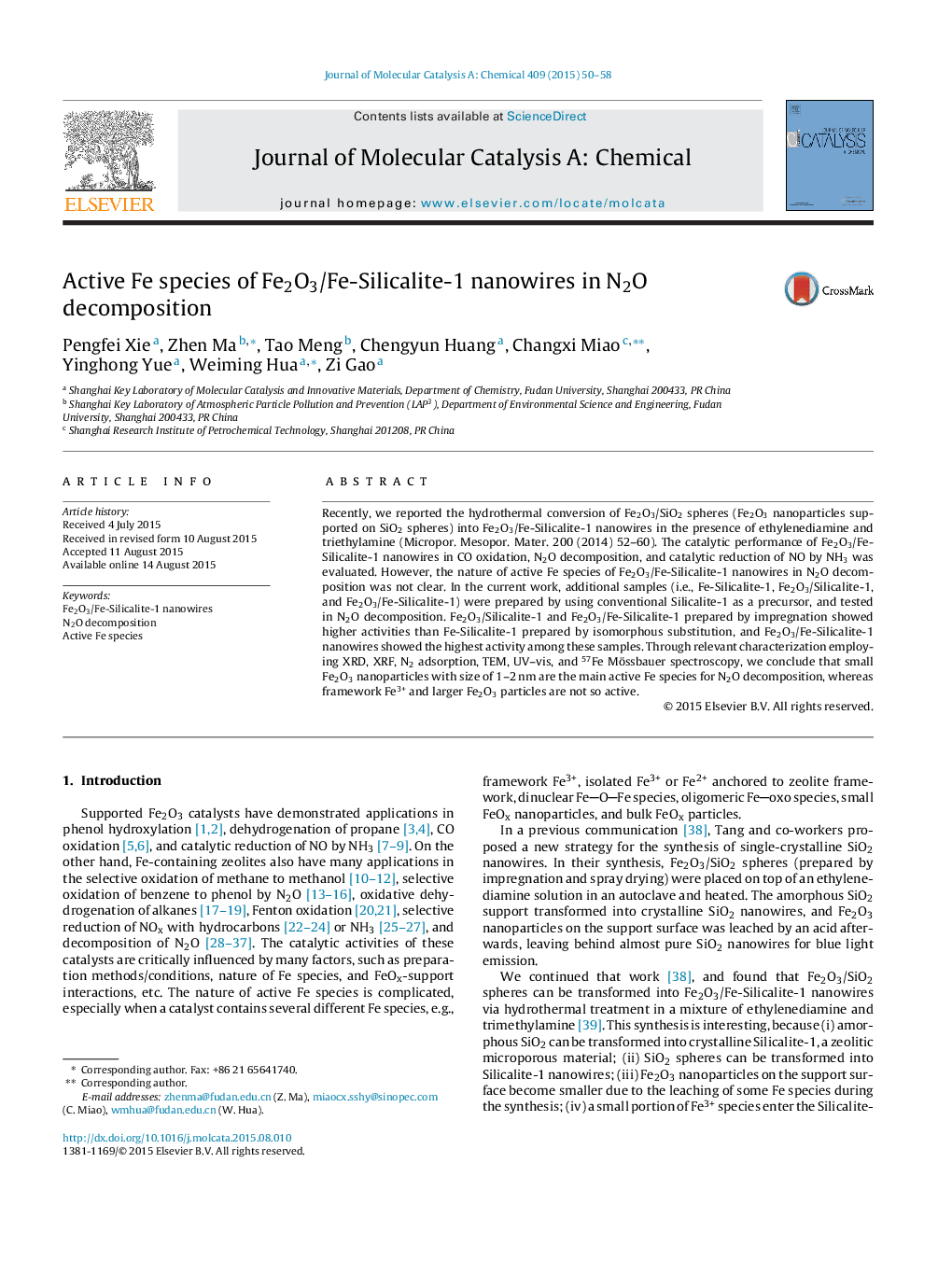| کد مقاله | کد نشریه | سال انتشار | مقاله انگلیسی | نسخه تمام متن |
|---|---|---|---|---|
| 64925 | 48375 | 2015 | 9 صفحه PDF | دانلود رایگان |

• A set of Silicalite-1 samples with different Fe species are synthesized.
• Small Fe2O3 nanoparticles (1–2 nm) are main active Fe species for N2O decomposition.
• The weak interaction between Fe and oxygen is responsible for higher activity.
Recently, we reported the hydrothermal conversion of Fe2O3/SiO2 spheres (Fe2O3 nanoparticles supported on SiO2 spheres) into Fe2O3/Fe-Silicalite-1 nanowires in the presence of ethylenediamine and triethylamine (Micropor. Mesopor. Mater. 200 (2014) 52–60). The catalytic performance of Fe2O3/Fe-Silicalite-1 nanowires in CO oxidation, N2O decomposition, and catalytic reduction of NO by NH3 was evaluated. However, the nature of active Fe species of Fe2O3/Fe-Silicalite-1 nanowires in N2O decomposition was not clear. In the current work, additional samples (i.e., Fe-Silicalite-1, Fe2O3/Silicalite-1, and Fe2O3/Fe-Silicalite-1) were prepared by using conventional Silicalite-1 as a precursor, and tested in N2O decomposition. Fe2O3/Silicalite-1 and Fe2O3/Fe-Silicalite-1 prepared by impregnation showed higher activities than Fe-Silicalite-1 prepared by isomorphous substitution, and Fe2O3/Fe-Silicalite-1 nanowires showed the highest activity among these samples. Through relevant characterization employing XRD, XRF, N2 adsorption, TEM, UV–vis, and 57Fe Mössbauer spectroscopy, we conclude that small Fe2O3 nanoparticles with size of 1–2 nm are the main active Fe species for N2O decomposition, whereas framework Fe3+ and larger Fe2O3 particles are not so active.
Figure optionsDownload high-quality image (106 K)Download as PowerPoint slide
Journal: Journal of Molecular Catalysis A: Chemical - Volume 409, 1 December 2015, Pages 50–58